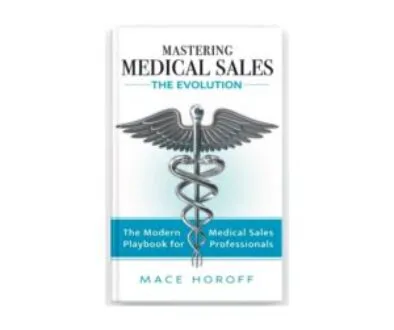What emergency procedures practice in flying taught me about medical sales
This week, I experienced something in the aviation world that transfers directly to medical sales.
As a pilot, I’m required to complete a flight review in my airplane every two years to keep my license current and my insurance company happy. I fly often and I have always regarded the flight review as a mere formality. In fact, most flight instructors who conduct flight reviews limit them to an hour of discussing procedures and regulations on the ground and then an hour or so of flying to include basic air maneuvers and some takeoffs and landings.
My flight instructor, Wayne Haley, is different. His approach is, “Since we’re going to do this, why don’t we focus on something that can keep you from getting killed.” Hmmm…not getting killed. That’s pretty hard to argue with!
Wayne wanted to optimize my chances of surviving an engine failure shortly after takeoff. If you’re going to lose an engine in an airplane, especially when you only have one, this is the worst time. The airplane is close to the ground and slow, which is not a good combination when the you-know-what hits the fan, or in the case of an airplane, when the fan stops! Many pilots and their passengers meet an untimely demise when the pilot tries to turn the airplane, which is now a glider, back to the runway and lose control of the airplane. This turn is known in aviation circles as “The Impossible Turn.” It kills a lot of pilots.
All pilots hope they never have to attempt “The Impossible Turn,” but let’s face it—hope is not a plan.
“Impossible Turn” is actually a misnomer, because the turn can be accomplished if the airplane has sufficient altitude and the pilot can execute it flawlessly. Flawless execution is a lot to ask when you think you’re about to die…unless you have practiced the turn in a realistic simulation and you have thought about what you’re going to do before it happens.
I’m an experienced pilot, but truthfully, I was worried about looking pretty inept in front of Wayne while performing this maneuver because I never did it before and it scared the hell out of me. I now understand how many of my workshop attendees feel when I put them in a high-stress role play situation.
The first simulated engine failure on takeoff occurred at 1000 feet. My rule has always been that I would never attempt a turn back below this altitude, and even then, if there was a better emergency landing option in front of me, I was heading for that. I was slow to respond to the simulated emergency, but I got the airplane turned around and I just made it back to the runway. Phew!
We tried it again from 800 feet. Having some experience now, I was able to combine some of the tasks involved and got the airplane turned around somewhat faster. I actually made it back to the runway with more altitude to spare than I did from 1000 feet. Ah, the benefits of practice!
Wayne said, “Let’s try it from 600 feet.” I said, “Really? Do you think we can make it?” He said, “I don’t know. Better to find out now than when it happens for real.”
At six hundred feet, Wayne pulled the power and made me wait three seconds before responding. The three seconds is the time it takes to realize you have a problem before you actually do something. This time delay is informally known as the O.S.M. (Oh-Shit Moment). I simultaneously lowered the nose and cranked the airplane into a 45 degree bank while simultaneously pulling out the propeller control to reduce drag. The result? I made it back to the runway with room to spare. I accomplished “The Impossible Turn” from 600 feet and survived!
What makes “The Impossible Turn” possible? Three things.
- Knowing the limits of the airplane and the pilot, in other words, based on experience, what is the lowest safe altitude from which a turn back to the runway should be attempted and under what conditions of weather, weight of the airplane, etc.
- The pilot deciding before every takeoff, exactly what he or she will do should the engine fail, i.e., what is the minimum altitude to attempt it, which way will you turn, what are the other landing options available? These things must be decided before The O.S.M. occurs.
- Practicing regularly with an experienced instructor who knows how to maximize the pilot’s and the aircraft’s performance.
You might be saying at this point, “Great flying lesson Mace, but what does this have to do with medical sales?”
Everything!
Just like a pilot’s life is on the line, medical salespeople have a lot to lose when they perform less than optimally in a sales situation. Healthcare providers are often slow to change the products they are using to treat their patients because they associate doing so with risk. In fact, converting a healthcare provider’s business often seems impossible, just like that turn! Yet most salespeople are willing to risk losing the sale instead of taking the time to understand the limits of the situation, planning a call strategy, and practicing the necessary talking points and responses so they can be delivered confidently and without hesitation.
Instead of preparing and practicing, sales reps “hope” that the sales call will go well. Again, hope is not a plan.
This week I received training that might one day save my life. Was it worth the effort? Hell yes, because I’m a more competent and confident pilot. If that O.S.M. comes, I’ll be ready.
Is it worth the effort to plan and practice your medical selling skills for that one opportunity you might have to close new business? Or is it just better to hope that whatever sales skills you have are good enough?
My favorite quote is, “The more you sweat at practice, the less you bleed in battle.” This week I took a hard step towards practicing what I preach. As a medical sales professional who also has much to gain and much to lose, will you do the same?
Contact me at 561.333.8080 if you would like to discuss technology that allows your salespeople to practice critical selling skills on their own, wherever they are with a proven ROI.



@ 5:11 pm
Please share your thoughts about blogs on this page. Great minds share great ideas. Thanks.
@ 11:39 pm
Mace, Jim Hill forwarded your blog to me. I loved the flying tips. I agree, flying has a lot to teach us all about discipline, practice and planning. I learned about pre-op planning from my flight training and applied it to my pre-op planning process a full 10 years before Atul Gawande wrote “the Checklist Manafesto”
My hospital, Kaiser, adopted my pre-op time out checklist for their origination and I still speak internationally on the process of pre-op planning.
Steve